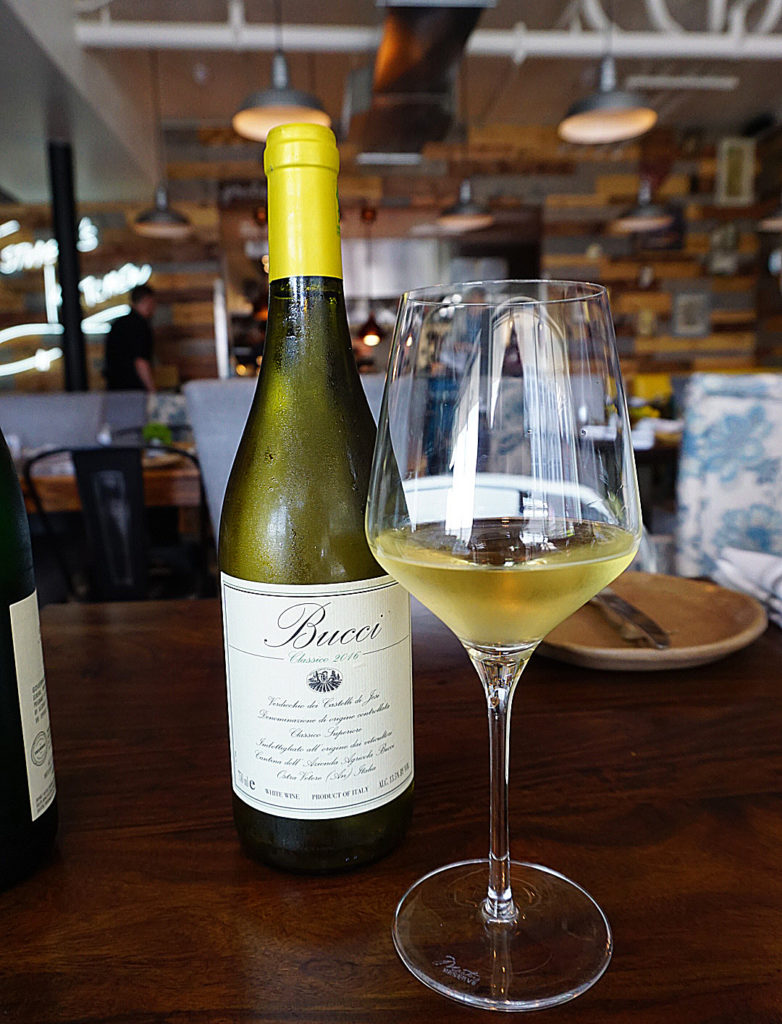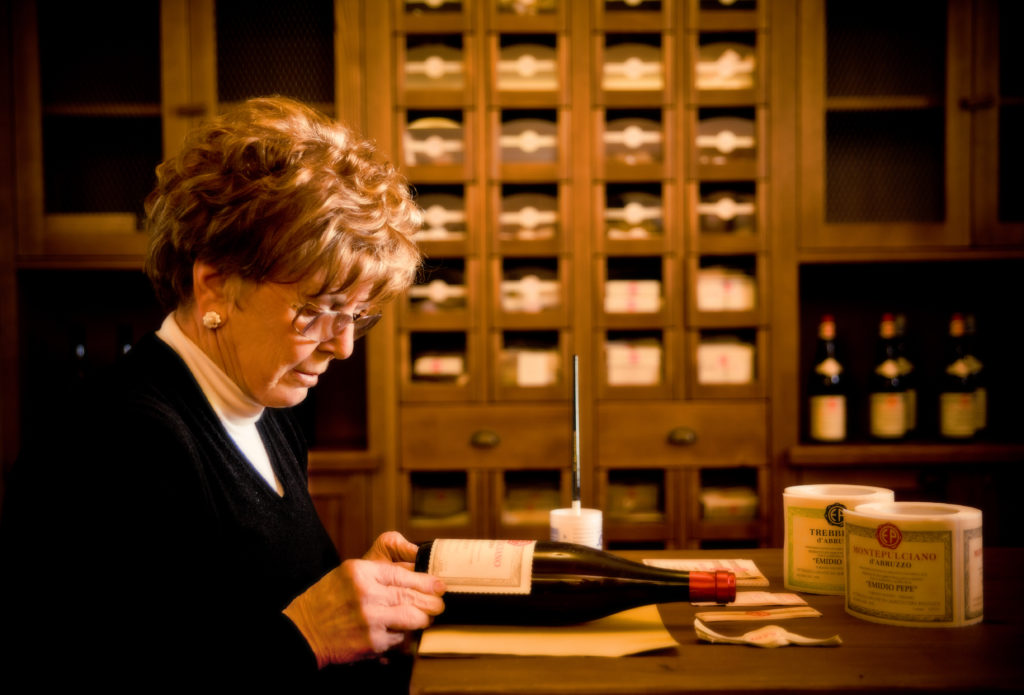In Italy, where food and wine are fervently wedded, winemaking is an instinctive and magical mingling of heritage, culture, and tradition. Italy’s two million acres of vineyards are home to two-thirds of all known grape varieties. Each wine bears a story and embodies a specific region; no two are alike. This kind of bewildering diversity seduces us to explore further and taste Italy from the top to bottom.
As with any first course, bubbles are a starting point with Italy’s highest quality sparkling wines coming from Franciacorta, located midway between Milan and Venice in the region of Lombardy. Wines here get their sparkle from the same method as Champagne, allowing secondary fermentation to take place in the bottle. And, like Champagne, Franciacorta refers to both the geographical region and the wine itself.
But, Franciacorta is distinctively Italian, expressing the region’s unique terroir and geographical anomaly that provides the immense daily temperature shift needed to produce Italy’s luxury fizz. Excellent with early and light courses, such as fresh oysters, Franciacorta can also escort a meal all the way to the finish.
Neighboring Emilia-Romagna, which is famous for balsamic vinegar, Prosciutto di Parma and Parmigiano-Reggiano, offers one of Italy’s oldest wines, Lambrusco – naturally frizzante, vibrant acidity with the versatility to pair with many foods. Made from a diverse family of grapes, Lambrusco produces a range of styles: from the rosy-hued wines of Lambrusco di Sorbara to the deep purply-bold wines of Lambrusco Grasparossa.
For over 145 years, Cleto Chiarli has been a benchmark for traditional, honest and high-quality Lambrusco. The Chiarli family wine production dates to the early 1800s when they began making and serving their wine on a small scale through the family restaurant “Osteria dell’Artigliere” in Modena. In 1860, they founded the first wine-producing company in Emilia-Romagna.

Also located in the north and gently crowned by the Swiss Alps, is Piedmont. Two of the country’s most legendary reds, Barolo and Barbaresco – often referred to as the king and queen of wine, respectfully – reign from this preeminent region. Complex and riveting, Barolo and Barbaresco’s characteristics are powerful. Made from the Nebbiolo grape, Italian wine experts often characterize the aromas and flavors as “tar and roses,” along with violets, prunes, licorice, chocolate, leather and black figs.
These wines are also a test of patience, where waiting for them to age will truly reward and soften its forceful tannins.
Luca Currado of Vietti once said, “A man bottles Barbaresco or Barolo when his son is born, only to open that vintage when the son gets married.”

(photo courtesy of Vietti)
People of the region love to enjoy these wines with one of the world’s most rarified specialties and perhaps the food that most immortalizes Piedmont – the white truffle. Generously mounded over polenta or tajarin, the earthy pungency of the truffles intensifies the wine yielding the most sublime experience.
Farther down the boot in the region of Marche, hillsides hold secrets to the complex and age-able white wine called Verdicchio – still greatly an undiscovered gem in the U.S. Italian wine expert and author of Native Grapes of Italy Ian D’Agata says in his book ‘Verdicchio is arguably Italy’s greatest native white grape variety.’

There are two DOC zones for Verdicchio in Marche: Verdicchio dei Castelli di Jesi and Verdicchio di Matelica. Many examples are 100% Verdicchio but the characteristics of these wines are refreshingly varied, thanks to a series of factors including soil, climate and elevation. The wines are typical of having good body, with high acidity and commonly has citrus, almond and subtly spicy flavors.
Moving south along the Adriatic coast is Abruzzo, where appealingly rustic, food-friendly wines, such as Montepulciano d’Abruzzo, can age brilliantly, especially in the hands of the right producers.
Emidio Pepe has been making wines in this area since 1964, during which time his winemaking style has been unchanged, following an ultra-natural and artisanal path. His grapes are de-stemmed by hand, naturally fermented in glass tanks, unfined, and unfiltered. When he is ready to sell his wines, they are re-bottled by hand, labeled by hand, then released into the world.

Also in Abruzzo is where winemaker Cristiana Tiberio of Agricola Tiberio produces a rich, vibrant, cheerful, and elegant Cerasuolo d’Abruzzo with flavors of sour cherry, pomegranate violet and rhubarb. Made with Montepulciano grapes, Cerasuolo’s lip-smacking acidity, firm structure and tactile mouthfeel lead to a lengthy and remarkably fresh finish.

The main goal of Tiberio’s esteemed estate, which she runs with her brother Antonio, is to produce wines that clearly express the characteristics of the land, vintage-by-vintage. For this reason, Tiberio wines vary annually because they do not follow standard winemaking recipes or force their grapes or their terroir to give something that they cannot.
“In drinking Cerasuolo d’Abruzzo, I look for its elegant, luminous energy able to represent the precise sense of my place,” says Cristiana Tiberio.
Pushing further south to the island of Sicily, as one might expect, Mt. Etna, an active volcano, is a region of extremes. Covered in snow year-round at the top, this brooding cone is like a prima donna who performs on her own terms.

Periodically emitting magmatic gases high above grapes that are planted on an astounding 45-degree incline of rocky soil, Etna’s vineyards are the highest in Europe. Not surprisingly, the winemakers of the area are just as fierce as nature’s volatile elements.
One can be sitting outside half in the shade and half in the sun and feel hot and freezing at the same time. But this hot-to-cold climate greatly lends to the wine’s sheer intensity. Producer Andrea Franchetti, for example, makes wines from five different vineyards, all 90+ years-old. Each vineyard is composed of different soil types and volcanic flows from eruptions that occurred over time.
Etna’s elevation is something that GAJA considered when looking for cooler spots to grow grapes and make wine. “Climate change means moving to higher altitude and when you go on Etna, the wines are bold,” says Gaia Gaja. “Every meter you go up, the wines take on a different structure.”

Finally, on the island of Pantelleria, a small volcanic outcrop on which Tunisia is visible on a clear day, is home to a sweet finish waiting to be relished. On Pantelleria, Zibbibo grapes are kissed by the sun to become plump and gushingly sweet and aromatic. They are then dried al fresco in the hot winds for several weeks until they become ultra-sweet raisins. The velvety wine that results in miniscule quantities – passito di Pantelleria – requires a large amount of grapes and enormous dedication and care. One sip of passito is tantamount to a single drop of the classic Joy de Jean Patou parfum – which requires no fewer than 10,000 jasmine flowers and 28 dozen roses to make a single ounce – concentrated, generously sweet, luxurious, and spellbinding.
They are then dried al fresco in the hot winds for several weeks until they become ultra-sweet raisins. The velvety wine that results in miniscule quantities – passito di Pantelleria – requires a large amount of grapes and enormous dedication and care. One sip of passito is tantamount to a single drop of the classic Joy de Jean Patou parfum – which requires no fewer than 10,000 jasmine flowers and 28 dozen roses to make a single ounce – concentrated, generously sweet, luxurious, and spellbinding.
From Pantelleria that hovers below Italy’s toe up to the borders that meet neighboring Austria and Slovania, Italy offers vast and delicious cultivated treasures. “A large part of what makes Italian wine so compelling is the reverent confidence with which they celebrate their own culture,” says Peterson. “This kind of humble swagger makes it so easy to love Italian wine, like we love Italian cars, clothes, and food. Italy is gloriously diverse and all these micro-cultures make for excellent crucibles for perfecting the obscure. There’s always something new to discover.”


